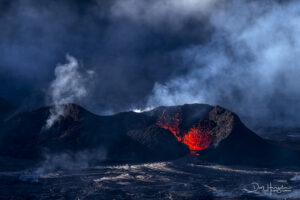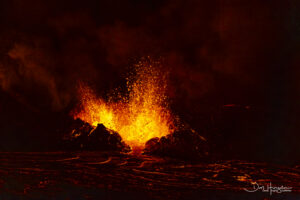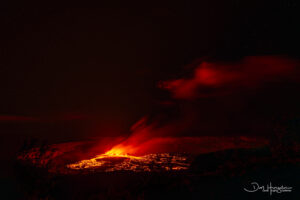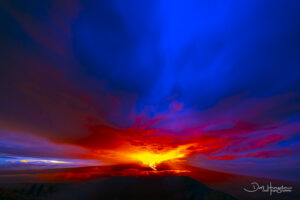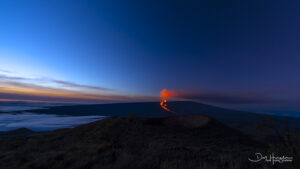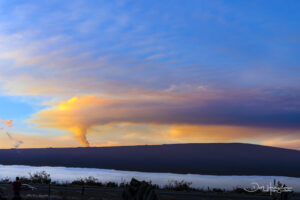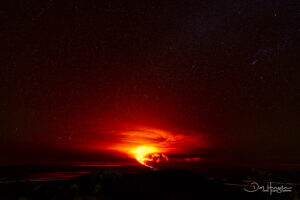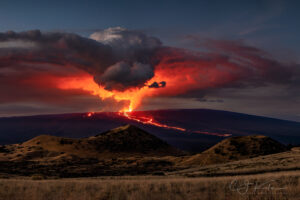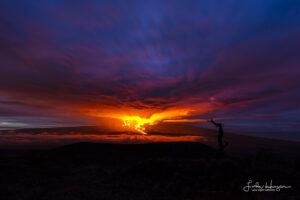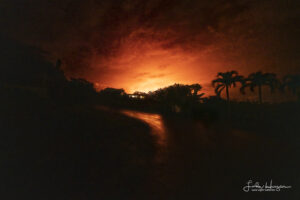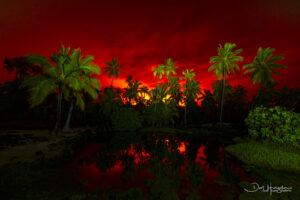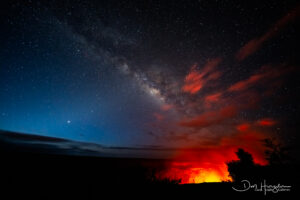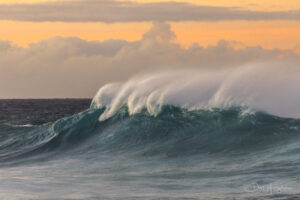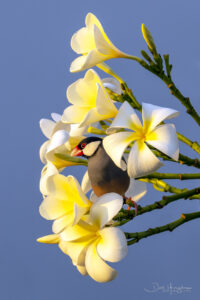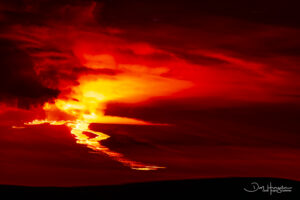
Here are the basics to get you going…
You can get good photos with an iPhone…I am seeing them all over Facebook.
But if you want to increase your chances of getting a great photo of the eruption, here is what you will need…
A tripod.
Camera body.
Three lenses…wide (like 14mm or a 16-35), medium (like 24-70 or 70-200 and a long lens (like a 400mm). The brighter the better on all of the lenses..f/2.8 would be terrific.
Bring an extra battery and extra card..although this type of photography does not result in too many shots in any one night…500 would be a big night.
A flash light to help you in the dark or to light up a foreground element.
Winter clothing.
As to settings…I shoot the entire range to get different effects. I shoot 30 second exposures to 1/2500th exposures. Remember a couple of things…lava produces heat shimmer, so the faster the shot, the more likely that the lava will be nearly in focus. Second, lava is moving…another reason to shoot fast rather than slow. And, you will likely be a long way from the flow, so details will be hard to capture…capture the scene. My long exposure shots are all quite wide…capturing the scene with a long exposure and low ISO.
ISO 100 is your friend. Try to keep your ISO low for most shots…go no higher than 1600 for any shot.
The best tip you will get is this…the red/yellow/white part of the eruption…the lava…will burn out white if you let it. We feel that a white lava shot is a deleter. So, you may have to use your hand or a card or something to cover the hottest spot of the image for much of the exposure…to try to balance the shot. I have been doing this technique for more than a decade and I still ruin two out of every three shots doing it..but the third one is a winner. Ruined shots will show kind of a shadow of your thumb or whatever you are using, because you held it there too long. This technique is “learn by doing”…and do not expect to nail it first time…shoot lots of shots and you will get better and better at it…until you only ruin two out of every three.
Photographing lava is tricky business, but IF YOU CAREFULLY CHECK EACH SHOT IN THE BACK OF YOUR CAMERA OR FINDER and then make adjustments to improve the next shot…you will quickly figure it out. If you do not review your shots, you may come home tired…and then disappointed. Learn how to review your shots by magnifying them in the Finder or back screen, so you can check for the dreaded White Lava and you focus. Again…remember that it is highly unlikely that any of us will get clean, crisp focus on live lava…it will probably be a bit blurry due to the heat shimmer around it.
As to where to do your photography…I have gotten good results in the Mauna Kea bathroom parking lot, along Saddle Road while trying to keep from getting a $1000 ticket, up Mauna Kea and everywhere in between…including downtown Kona for the glow. Explore and you will find your spot…there is no one secret spot for this massive eruption. And a helicopter would be nice, with doors off and at sunrise or sunset…however, they are a little difficult to reserve at the moment.
Hope that helps. If you have specific questions, send me an email at [email protected] and I will get you an answer.
Aloha,
Don Hurzeler for C.J.Kale, Linda Hurzeler and Lava Light Galleries, Inc.


